Experts disagree how Paris came to be known as the “City of Light.” According to the official City of Paris website, the nickname was originally bestowed upon the city “because it was a vast center of education and ideas during the Age of Enlightenment.” Other sources state Paris was dubbed City of Light in 1828 when it began lighting the Champs-Elysées with gas lamps, the first European city to do so. Still others claim the moniker came into fashion when Emperor Napoleon III tore down whole quarters of houses dating back to the Middle Ages in order to make way for large avenues that let light pour into the former Medieval city. Whichever story is correct, there is no doubt that the name is apropos; today Paris has no less than 242 illuminated hotels, churches, statues, fountains and national buildings.
I definitely wanted to see the city by night, but where to start? Even in broad daylight, touring a new city can be challenging, but by night it’s a daunting proposition. Fortunately, I had a home-grown tour guide. My friend Jérôme Gobin, who had recently returned to France after traveling the world for a year, was eager to show me how to get around Paris. We met up at the Arc de Triomphe at dusk and ducked beneath the immense arch to shelter from the persistent drizzle (refer to #1 on the map at bottom of article). For the next several hours he treated me to a breathtaking walking tour of Paris by night, which I recreate here so others can follow our path.
As darkness descended, reflections from the eternal flame of the Tomb of the Unknown Soldier flickered on the cold stone walls, engraved with names of French war victories and generals. Beyond the memorial lay the Champs Elysee (#2), Paris’ famous upscale shopping street, with storefronts representing the world’s most famous merchants. We wandered along the rain-slicked pavement, past stately horse chestnut trees, peering into the windows of Cartier, Louis Vuitton and the largest Adidas store in the world.
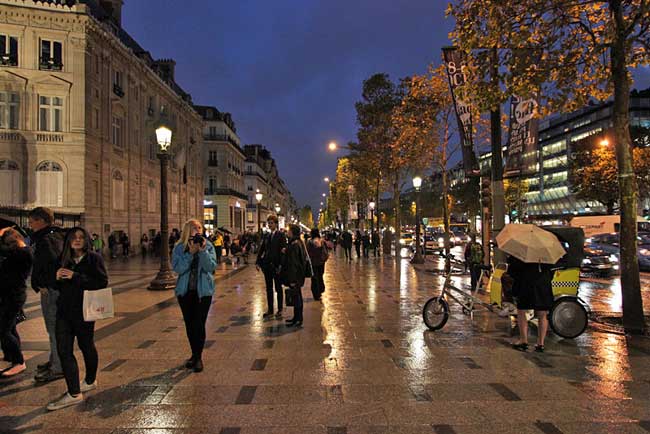
A few blocks down, we turned right onto Winston Churchill Avenue and strolled between the Nef du Grand Palais (Great Palace) and the Petit Palais (Small Palace). Both built in 1900 for the Universal Exhibition, today they are a museum and exhibition space. At the banks of the River Seine we stepped onto the single span steel arch of Pont Alexandre III bridge (#3), considered an engineering wonder when it was built is 1900. From one end to the other it was lined with stunning art Nouveau streetlamps, cherubs, nymphs, stone urns, lions and winged horses. Below, the inky Seine was aglow with golden reflections from illuminated bridges. In the distance, the Eiffel Tower’s blue laser light pierced rain clouds and fog, lighting up the sky.
Goosebumps raised on my arms and neck. The previous two days had been a whirlwind of arrival and settling in, but standing there on the Alexandre III Bridge I was entirely in the moment. “My God,” I thought. “I’m in Paris!” With feet that barely touched the ground, I returned to the right bank, where we continued to Place de la Concorde (#4), the largest plaza in Paris and most famous as the site where King Louis XVI, Marie Antoinette, Madame du Barry, and Maximilien Robespierre, among others, met their final fate by guillotine.
Today, no evidence of the plaza’s gruesome past remains. At its center is a giant basalt obelisk, covered in ancient Egyptian hieroglyphics that date to the reign of the pharaoh Ramses II. One of only two in the world, it was donated to France by the Egyptian government in the 19th century. Bracketing the obelisk at either end of the plaza are two lovely fountains with stone basins and frolicking nymphs that spout water.
At the north end of Place de la Concorde, we turned right onto Rue de Rivoli (#5), awash in lights from upscale hotels, where doormen in top hats held doors open for guests or signaled for taxis.
Several long blocks later we turned right onto Place du Carrousel and into the front entrance of the Louvre Museum (#6). A breathtaking structure any time, at night it takes on a magical quality, as soft light emanating from its famous glass pyramid imbues the entire plaza with a burnished glow.
Barely at the halfway point of our walk, we picked up our pace. Just beyond the Louvre we diverted onto the Pont des Arts (#7), a pedestrian bridge over the Seine that has become a favorite of lovers, who attach padlocks to its railings and throw the key into the river as a symbol of their everlasting love.

We continued along the banks of the Seine to Rue de la Cite and crossed over to Ile de la Cité, the original site upon which the city of Paris was founded. Among the many historic buildings found here, Notre Dame Cathedral (#8) is perhaps the most famous. While most visitors were looking up at the Gothic church, with its impressive flying buttresses, Jérôme led me to a dark corner of the plaza in front of the church and pointed to a brass marker embedded into the pavement. “This is the exact enter of Paris, zero kilometer.” he explained. “All addresses start from this spot.”
With the hour growing late we crossed over to the left bank and made our way to the Panthéon (#9), just off Rue Saint-Jacques in the Latin Quarter. Originally built as a neoclassic church with a facade modeled after the Pantheon in Rome, today it is a crypt containing the remains of the most distinguished of French citizens, including Maria Curie, Voltaire, Victor Hugo, Émile Zola, and Jean Moulin.
By now we were starving, so we backtracked to the Left Bank of the Seine and wandered through the Latin Quarter (#10). Though loaded with tourists, the narrow cobblestone streets are a photographer’s dream come true, with cute shops and neon-outlined cafes mingling with old churches.
As the rain picked up, we ducked into a Creperie, where I scarfed down a delicious Galette filled with smoked salmon, melted cheese, and crème fraîche, and lingered over dinner until the rain abated.
Finally, with full bellies and less sore feet, we headed for the Metro station at Saint-Michel (#11), pausing briefly to examine the sculpture of the saint that marks its entrance before descending into the tunnels.
As I rode back to my vacation rental apartment in the 9th Arrondisement, which by dumb luck alone turned out to be one of the best places to stay in Paris, I realized I still had goosebumps. And I know, without a doubt, that if I hadn’t seen Paris by night, I wouldn’t really have seen Paris.
Retrace my footsteps on a walking tour of Paris:
To follow the same route I took on my walking tour of Paris, match up the numbers in the narrative above to the map below. The entire trek can be done in three to four hours, not including a stop for dinner. If you wish to shorten the tour, eliminate the Panthéon. Enjoy!


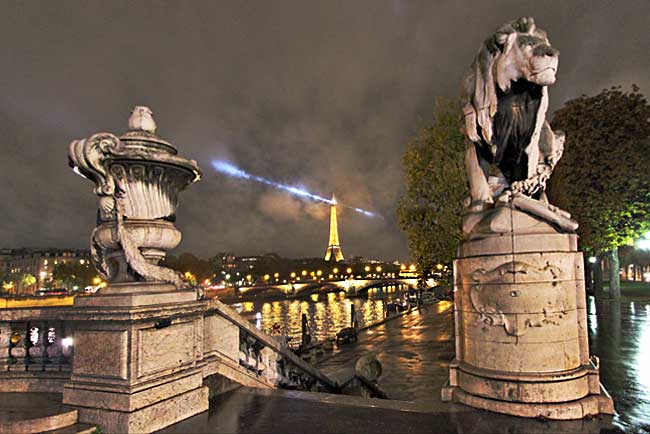
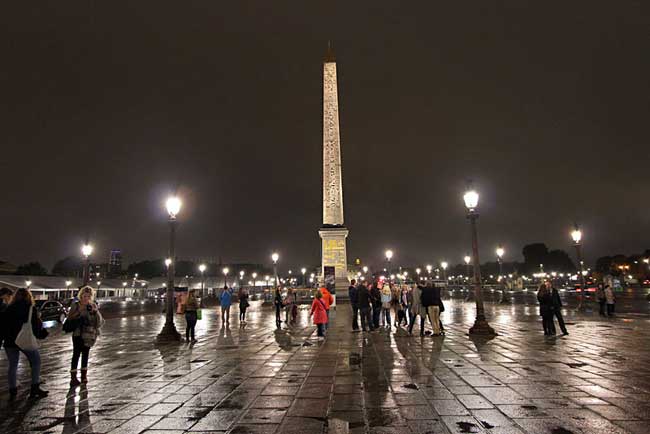

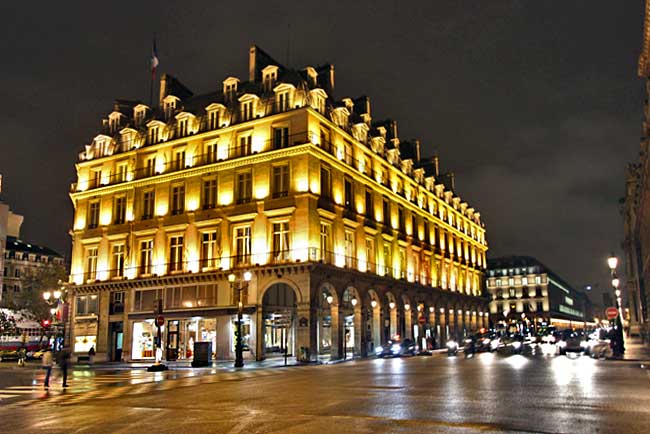

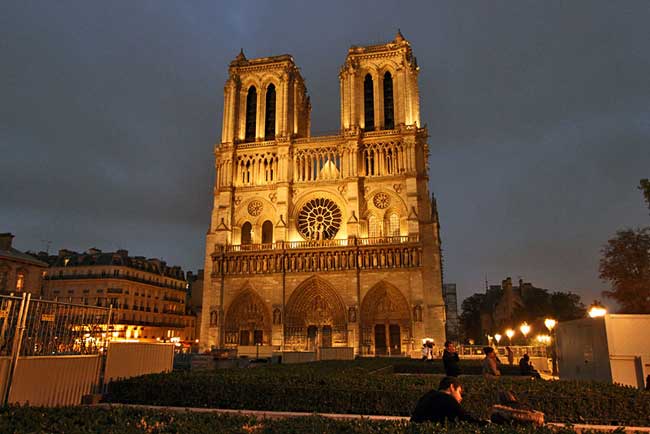
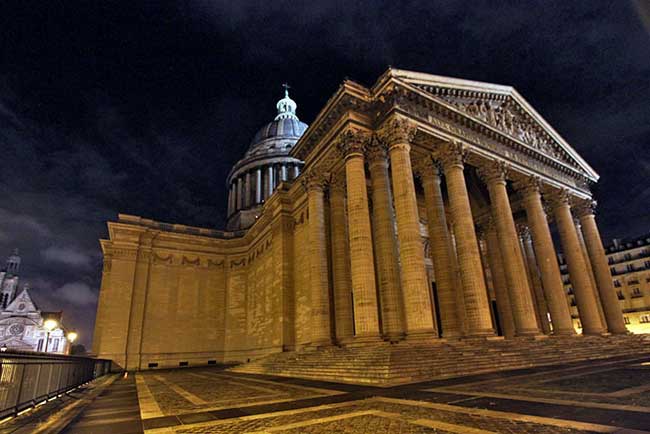
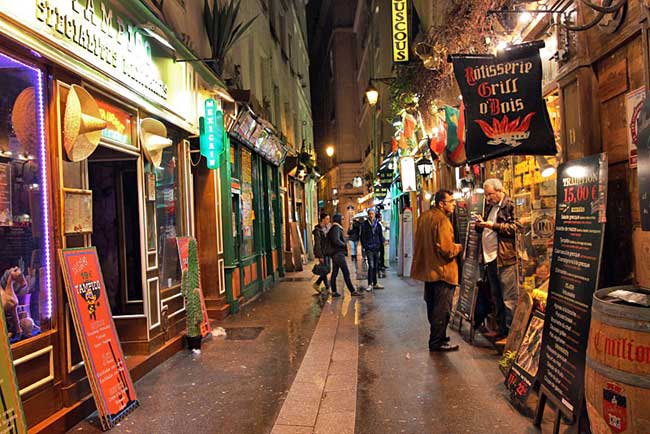
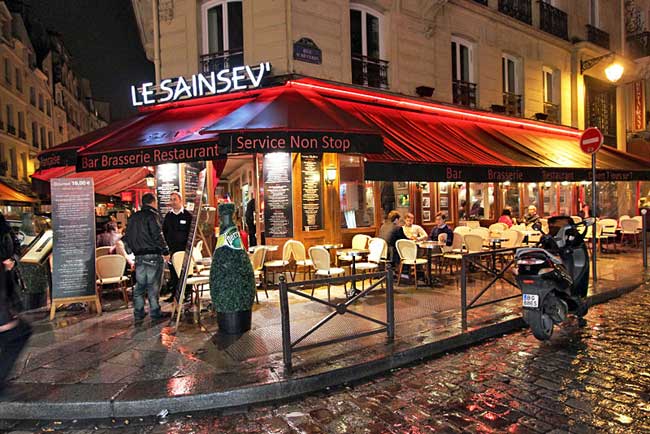

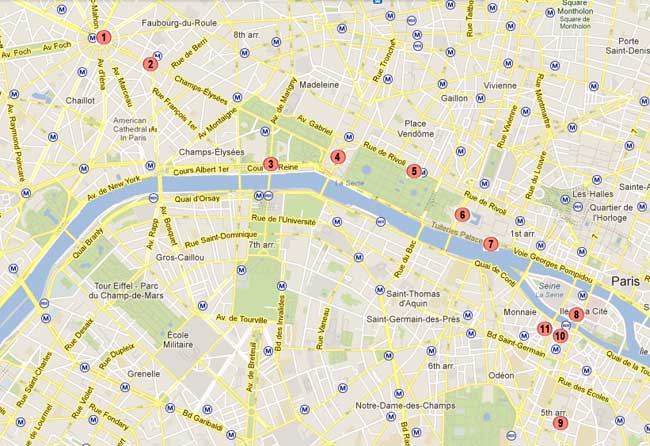
Fantastic tour Barbara! I loved the photos as well 🙂
You’re welcome. But in the future, please use our name in a comment or I will have to remove it.